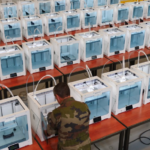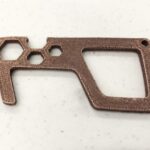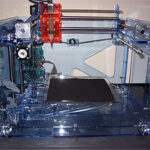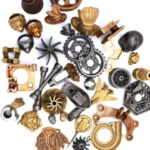
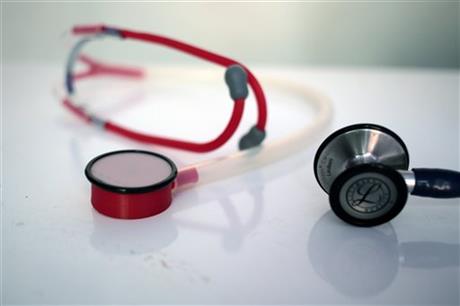
While disaster has not yet befallen my humble family, there is no shortage of emergencies globally and the COVID-19 pandemic has demonstrated just how useful even desktop 3D printing can be during disaster situations. Provided with the opportunity to review an Ultimaker S3 3D printer and several unique filaments, I thought I’d explore the 3D printing of simple goods that might be useful during emergency situations to get an idea for just how useful a desktop 3D printer might be.
This series will include a review of the Ultimaker S3, discussions with a couple of companies involved in the series, as well as coverage of how specialty materials, such as copper and investment casting filaments, might be used to produce metal parts when traditional supply chains are compromised or inaccessible. Before we get into any of that, however, let’s begin with an overview of how 3D printing has already been used in emergencies.
The most obvious emergency scenario that comes to mind is the ongoing pandemic. Because of the continuous coverage we and other publications have dedicated to the COVID-19 outbreak, it isn’t necessary to dedicate too much time to the topic here. Desktop 3D printers have been used for a wide variety of applications ranging from the less critical, such as hands-free door openers, to the too-critical, such as ventilator parts.
In this latter case, desktop 3D printing probably shouldn’t be the go-to technology, given the materials available the likely lack of good manufacturing practices required by the U.S. Food & Drug Administration for their production. However, face shields made from 3D-printed head bands and cut plastic sheets have been highly sought after by the medical community dealing with the pandemic amid supply shortages and many of these have been made on desktop machines.
The pandemic isn’t the only emergency that has seen 3D printing rise to the occasion. One of the most well-known innovators in this regard is Dr. Tarek Loubani, a Palestinian-Canadian emergency doctor. Dr. Loubani uses desktop 3D printing to introduce medical supplies to the Gaza Strip, a sliver of land that has been under a near constant state of crisis since it was placed under siege by Israeli forces beginning in 1994 and steadily more controlled over time.
The doctor began with a stethoscope that could be 3D printed for $0.30, compared to the $200 price tag of a traditionally made counterpart. More recently, he deployed 3D printed tourniquets during the “Great March of Return” protests that began in Gaza in 2018, 70 years after the 1948 Nakba event when 700,000 Palestinians fled or were expelled from their homes by the newly formed Israeli government.
Dr. Loubani’s Gila Project may be one of the most recognizable using 3D printing for such emergency responses, but there are other projects established as well. Field Ready, created in 2014, has published a catalog of 3D printable tools that can be used in third world countries to deliver aid or provide disaster relief. Not every object listed in the document can be easily accessed, but most are accompanied by links to online files at such sites as Thingiverse.

Field Ready has offered its support in places like Haiti, Nepal and Syria, where they first attempt to identify parts that are needed and then 3D print them on site. After the 2015 earthquake in Nepal, the group was able to 3D print spare parts for a connection to local power supply as well as baby incubators. Other parts printed include umbilical cord clamps, wrenches, wind turbines, hydroponics and more. The items are ranked in terms of field readiness, the ease with which it can be made, user-readiness, its level of completion from a technological standpoint (concept vs. already in use), and risk level (how dangerous it is to make and use).
In addition to dedicated non-profits focused on aiding those in need during emergencies, there those individuals, self-identified or not, prepping for disaster with the use of 3D printing. This includes preppers who are looking for ways that the technology might be useful alongside their collections of canned goods housed in underground shelters, as well as DIY enthusiasts who have simply modeled some useful hacks and repair parts for everyday use.
The topic of 3D printers has come up on the r/preppers subreddit on more than one occasion, with some preppers using desktop machines to 3D print such utilitarian objects as replacement backpack straps to adapters capable of converting plastic bottles into a solar still. Some see the desktop systems as expensive toys insufficient when SHTF (an expletive-driven prepper acronym for when crisis strikes).
The r/FunctionalPrint subreddit is filled with examples that would seem to prove these naysayers wrong. This is in addition to the numerous instances of useful prints on repository sites like Thingiverse and YouMagine, as well as the well-documented projects executed by the students of Michigan Technological University professor Joshua Pearce. Whereas you can likely find a replacement glovebox handle for your VW Gulf on Thingiverse, Pearce’s group has developed collections of lab equipment, households items, and a variety of parts for mechanical devices, ranging from 3D printers and recyclebots to an open source grinding machine.
What all of this seems to demonstrate is that even a desktop 3D printer could be potentially very useful during an emergency. What I learned from first-hand experience is that, while that may be the case, there are still some obstacles to overcome before a novice can deploy a 3D printer as a rapid response tool.
Feature image courtesy of the Gila Project.
When it comes to 3D real estate visualization in the USA, our service provides the perfect solution for bringing property listings to life. Through our platform, you can easily access cutting-edge 3D renderings that showcase your real estate projects in a way that attracts potential buyers and investors. Whether it's residential, commercial, or mixed-use properties, our team of experts uses advanced technology to create immersive visualizations that highlight the best features of your property, making it easier for clients to imagine the space as their own.
Through our website, you can quickly get high-quality 3D real estate visualizations that are tailored to your specific needs. With our help, you'll stand out in the competitive real estate market by offering potential buyers a realistic, interactive view of your property. Our efficient process ensures a fast turnaround time, while our attention to detail guarantees that every aspect of the property is represented accurately, giving you a powerful marketing tool to promote your real estate listings.



